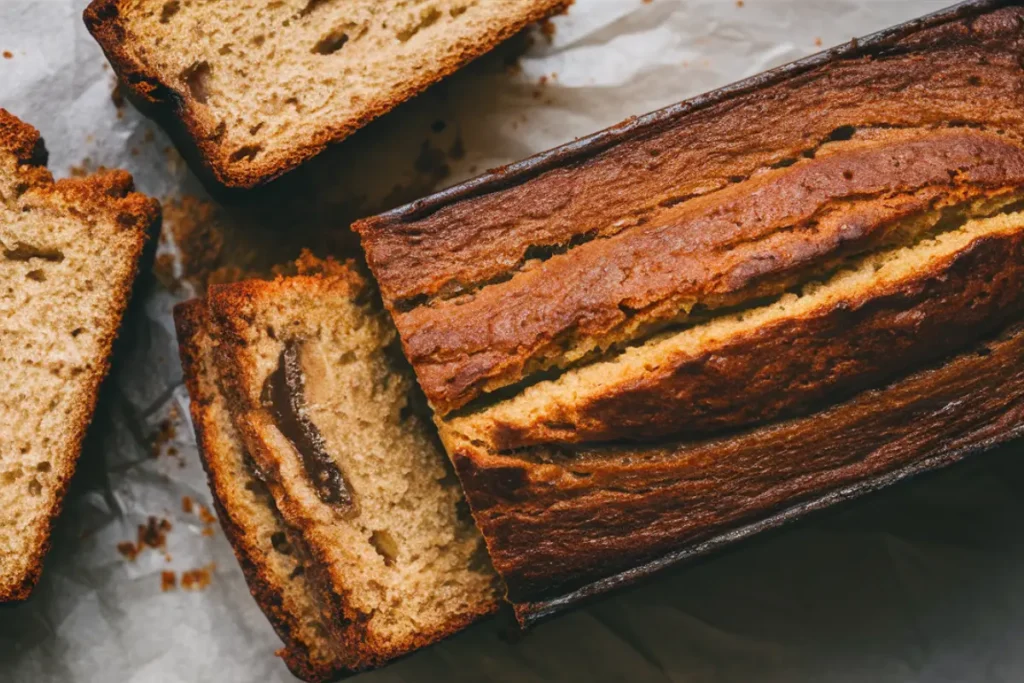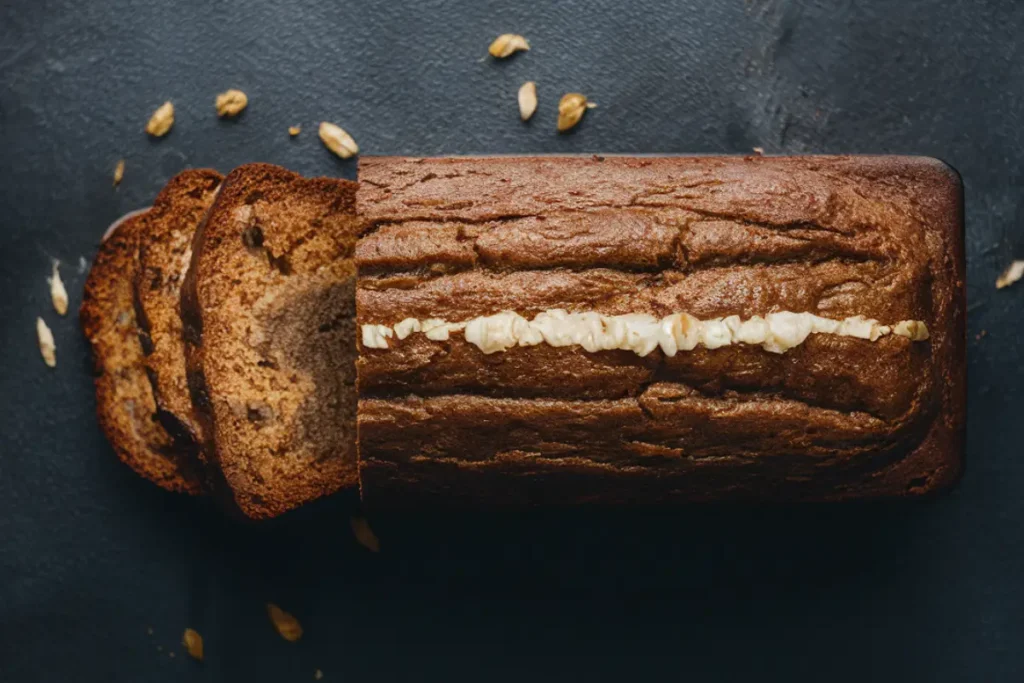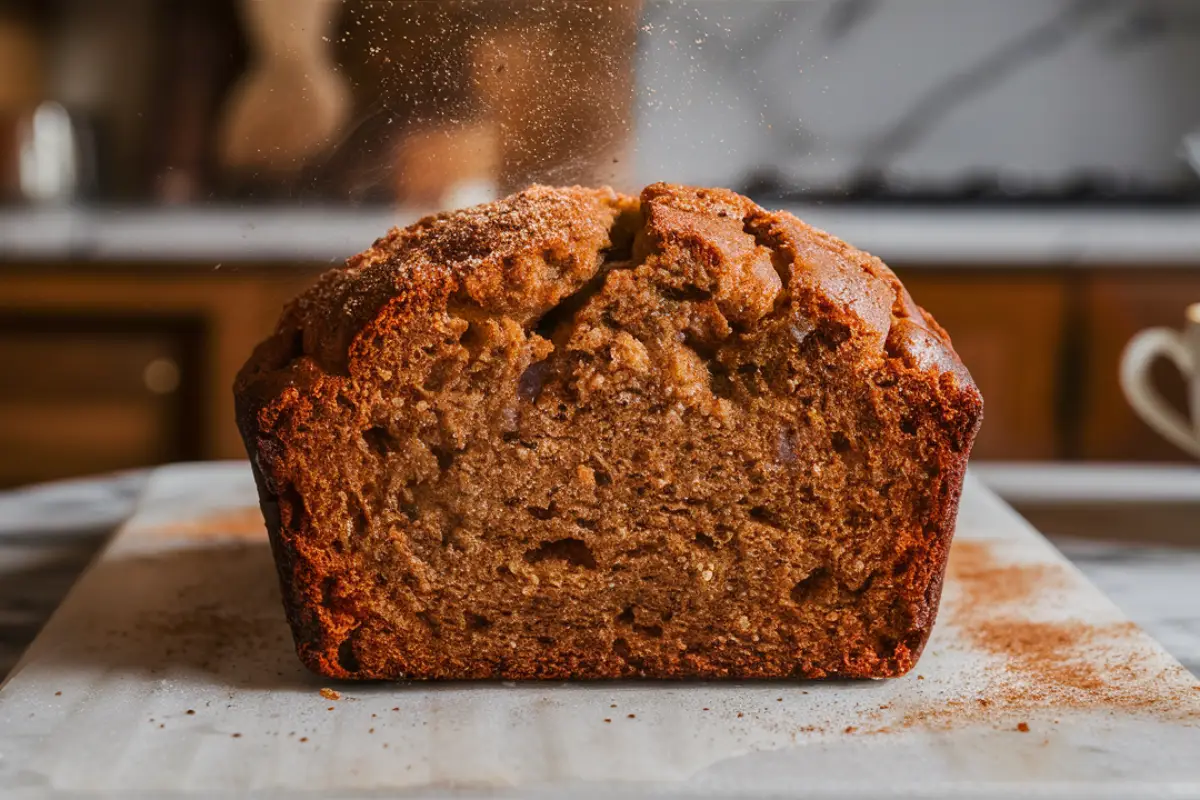Banana bread is a timeless favorite. It’s moist, flavorful, and a great way to use up overripe bananas. But what if you find yourself without baking soda? No need to panic! This guide will show you how to make perfect banana bread without baking soda, exploring substitutes, techniques, and more.

The Role of Baking Soda in Banana Bread
Baking soda, or sodium bicarbonate, is a key player in many baking recipes. It helps banana bread rise by reacting with acidic ingredients to release carbon dioxide. This gas forms bubbles in the batter, giving the bread its light and fluffy texture. Without baking soda, banana bread can turn out dense and flat, but don’t worry—there are plenty of alternatives that can save the day!
Can Banana Bread Be Made Without Baking Soda?
Yes, banana bread can definitely be made without baking soda. The key is to use a substitute that will still provide the necessary leavening. While the texture and rise might differ slightly, you can still achieve a delicious, fluffy loaf. Here’s how you can adjust your recipe to ensure a tasty outcome.
Common Substitutes for Baking Soda
When you’re out of baking soda, several alternatives can be used. Here’s a detailed look at some popular substitutes and how they affect your banana bread:
| Substitute | Description | Adjustments Needed |
|---|---|---|
| Baking Powder | A combination of baking soda and an acid. | Use 1 teaspoon per cup of flour. Baking powder is double-acting, so it works in two stages. Make sure to adjust for the extra leavening. |
| Yeast | A living organism that ferments sugars to produce carbon dioxide. | Requires proofing and a longer rise time. You’ll also need to adjust the amount of liquid in your recipe. |
| Self-Rising Flour | Flour with added baking powder and salt. | Replace all-purpose flour and omit any additional leavening agents. |
Effect of Different Leavening Agents on Texture
Each substitute impacts your banana bread in unique ways:
- Baking Powder: Offers a similar leavening effect to baking soda but can result in a slightly denser texture if not used correctly. It’s a good option for a straightforward swap, but be mindful of the amount you use.
- Yeast: Provides a distinct rise and flavor. Yeast-leavened banana bread will have a different texture, often a bit more chewy and with a slight yeasty flavor. It also requires additional time for proofing.
- Self-Rising Flour: Convenient, as it combines flour, baking powder, and salt. However, ensure your recipe doesn’t already include these ingredients, or you might end up with an overly salty or improperly risen loaf.

Essential Ingredients for Banana Bread Without Baking Soda
Even without baking soda, you’ll need the essential ingredients for banana bread. Here’s what you should have on hand:
- Bananas: The heart of the recipe. Use very ripe bananas for maximum sweetness and moisture.
- Flour: All-purpose flour is most commonly used, but you can experiment with whole wheat or gluten-free alternatives.
- Sugar: Granulated or brown sugar adds sweetness. Brown sugar will give your bread a richer flavor.
- Eggs: Provide structure and help bind the ingredients together.
- Butter or Oil: Adds moisture and richness to your bread. You can use vegetable oil, coconut oil, or even melted butter.
Achieving the Right Texture Without Baking Soda
Texture is crucial for delicious banana bread. Here’s how you can ensure your bread turns out perfectly:
- Mixing: Overmixing can lead to a dense loaf. Stir the batter just until the ingredients are combined. Lumps are okay!
- Baking: Preheat your oven to the correct temperature to ensure even baking. Use a light-colored pan to prevent overbrowning.
Recipes for Banana Bread Without Baking Soda
Let’s dive into some tried-and-true recipes:
Classic Banana Bread
Ingredients:
- 3 ripe bananas
- 1 cup sugar
- 2 eggs
- 1/2 cup butter
- 1 1/2 cups flour
- 1 teaspoon baking powder
Instructions:
- Preheat oven to 350°F (175°C).
- Mash bananas until smooth.
- In a bowl, mix bananas, sugar, eggs, and melted butter.
- Stir in flour and baking powder until just combined.
- Pour into a greased loaf pan.
- Bake for 60 minutes or until a toothpick inserted in the center comes out clean.
Vegan Banana Bread
Ingredients:
- 3 ripe bananas
- 1 cup sugar
- 1/2 cup coconut oil
- 1 tablespoon apple cider vinegar
- 1 1/2 cups flour
- 1 teaspoon baking powder
Instructions:
- Preheat oven to 350°F (175°C).
- Mash bananas and mix with sugar, coconut oil, and apple cider vinegar.
- Stir in flour and baking powder.
- Pour into a greased loaf pan.
- Bake for 50-55 minutes or until a toothpick inserted in the center comes out clean.
Gluten-Free Banana Bread
Ingredients:
- 3 ripe bananas
- 1 cup sugar
- 1/2 cup vegetable oil
- 1 teaspoon vanilla extract
- 1 1/2 cups gluten-free flour blend
- 1 teaspoon baking powder
Instructions:
- Preheat oven to 350°F (175°C).
- Mix mashed bananas with sugar, oil, and vanilla extract.
- Stir in gluten-free flour and baking powder.
- Pour into a greased loaf pan.
- Bake for 55-60 minutes or until a toothpick inserted in the center comes out clean.
Adjusting Baking Times and Temperatures
Substitutes can affect baking times and temperatures. Here’s how to adjust:
- Baking Powder: Generally, use the same baking time as a recipe with baking soda. Keep an eye on your bread and test with a toothpick.
- Yeast: Expect longer rise times. Let the dough rise until doubled in size before baking.
- Self-Rising Flour: Baking time should be similar, but check for doneness earlier.
Mixing Techniques for Banana Bread Without Baking Soda
Proper mixing is crucial for the perfect loaf:
- Creaming Butter and Sugar: Cream these ingredients together before adding others. This helps incorporate air into the batter, improving the rise.
- Folding in Dry Ingredients: Gently fold in the flour and leavening agents to avoid overmixing. This prevents a dense texture and ensures even distribution.
Dietary Adjustments: Vegan and Gluten-Free Options
Banana bread can be adapted for various dietary needs:
- Vegan: Use plant-based oils and substitutes like apple cider vinegar to replace eggs.
- Gluten-Free: Choose a good-quality gluten-free flour blend. Make sure all other ingredients are gluten-free to avoid cross-contamination.
Common Mistakes to Avoid
Avoid these pitfalls to ensure perfect banana bread:
- Overmixing: This leads to a dense loaf. Mix just until combined.
- Incorrect Leavening: Using too much or too little of your substitute can affect texture.
- Underbaking: Ensure the center is fully cooked by testing with a toothpick. It should come out clean.
Banana Ripeness and Its Effect on Bread
Ripe bananas are key for moist, flavorful banana bread. The more brown spots, the sweeter and more flavorful the bananas will be. Aim for bananas that are very ripe for the best results.
Flavor Enhancements for Banana Bread
Elevate your banana bread with these additions:
- Nuts: Walnuts, pecans, or even macadamia nuts add a delightful crunch.
- Chocolate Chips: For a sweet surprise, fold in some chocolate chips.
- Spices: Cinnamon, nutmeg, or allspice can enhance the flavor.
Nutritional Comparison with Traditional Recipes
Banana bread without baking soda might have different nutritional values. Using alternatives can lower sodium content and accommodate various dietary restrictions. Always check your specific ingredients for the most accurate nutritional information.
Creative Variations of Banana Bread
Experiment with these fun twists on classic banana bread:
- Peanut Butter Swirl Banana Bread: Swirl creamy peanut butter into the batter for a rich flavor.
- Tropical Banana Bread: Add pineapple and coconut for a tropical twist.
- Banana Bread Muffins: Make individual servings by baking the batter in a muffin tin.
Freezing and Storing Banana Bread
Keep your banana bread fresh with these tips:
- Freezing: Wrap your loaf in plastic wrap and then foil. Freeze for up to 3 months. To thaw, leave at room temperature or warm in the oven.
- Storing: Keep banana bread in an airtight container at room temperature for up to a week. For longer storage, freeze slices individually.
Choosing the Best Bananas
Select bananas that are mostly brown with some black spots. They should be soft to the touch and easy to mash. Avoid using green or overly firm bananas as they won’t provide the sweetness or moisture needed.
Ensuring Even Cooking
For evenly baked banana bread:
- Use a Light-Colored Pan: Dark pans can cause overbrowning.
- Rotate the Pan: Halfway through baking, rotate the pan to ensure even heat distribution.
Benefits of Making Banana Bread Without Baking Soda
Making banana bread without baking soda has
its perks:
- Lower Sodium: A healthier option, particularly for those watching their sodium intake.
- Dietary Flexibility: Adapt recipes for different dietary needs, like vegan or gluten-free.
- Unique Texture: Enjoy a different texture and flavor profile.
Comparative Analysis: Traditional vs. No Baking Soda Recipes
Traditional banana bread recipes often rely on baking soda for rise and texture. Without it, you’ll use other leavening agents that can change the flavor and texture slightly. This guide helps you navigate these differences and achieve a delicious result every time.
Frequently Asked Questions (FAQs)
Q: Can I use self-rising flour instead of baking soda?
A: Yes, self-rising flour can replace all-purpose flour and baking soda. Just omit any additional leavening agents in the recipe.
Q: How long should I bake banana bread without baking soda?
A: Baking time is generally similar—around 50-60 minutes. Check for doneness with a toothpick.
Q: Can I make banana bread in a bread machine?
A: Yes, use the quick bread setting and adjust the recipe as needed for your machine’s specifications.
Conclusion
Making banana bread without baking soda can open up a world of delicious possibilities. Whether you’re using baking powder, yeast, or self-rising flour, you can still achieve a moist, flavorful loaf. Experiment with different recipes and find your perfect banana bread!
